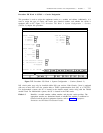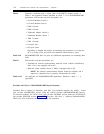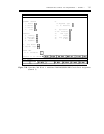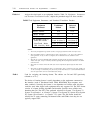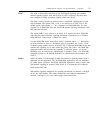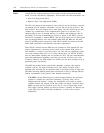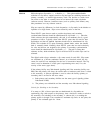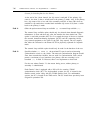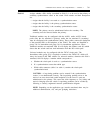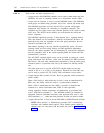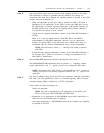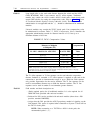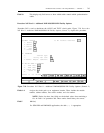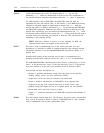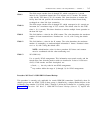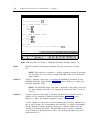
ADMINISTRATION OPTIONS AND REQUIREMENTS — GENERIC 2
7-61
Field 13
Assigns whether a DS1 facility (translated in field 12) is to be used as the primary or
secondary synchronization source to the switch. Field encodes and their descriptions
are:
0
1
2
Assigns that the facility is not used as a synchronization source
Assigns that the facility is the primary synchronization source
Assigns that the facility is the secondary synchronization source
NOTE: The primary must be administered before the secondary. The
secondary must be removed before the primary.
Traditional modules may be configured with the ANN11 and/or ANN35 circuit
packs. Only the slot translated 1 (primary) and/or the slot translated 2 (secondary)
must be configured with synchronization cables. These cables connect the backplane
of the translated DS1 to the backplane of the TN463. The cables are identified as
group 334 for intercabinet and group 361 for intracabinet applications. When
traditional modules are translated, field 20 will display the number (code 99) which
shows that the switch could not read information from the DS1 circuit pack.
Universal modules may be configured with the TN767 circuit pack. The
intercabinet cable (group 503) is required to connect to the TN463 SC, which will
always be located in the TMS cabinet. For universal modules, whenever this field is
translated, field 20 displays a number which corresponds to:
a.
b.
c.
Whether the circuit pack is used as a synchronization source
If a synchronization source then which type
Which cable connector (cable 0 or cable 1) contains the circuit pack
synchronization leads
CAUTION: A loop-timing problem can be created if the synchronization
sources is not administered correctly. The loop-timing problem exists as the
result of an error where both switch endpoints (for the same T1-span) are
administered as the primary. This causes the clock frequency to vary widely and
result in bringing down the switch. Loop-timing problems can be avoided by
following a correctly engineered network synchronization diagram.
NOTE: Depending on the application type (encode) translated, there may be
additional administration, slot, and port grouping restrictions.



